The Namib is one of the oldest and driest deserts in the world. The western edge of the southern Namib, stretching down to the Orange river, is a sea of sand that is 300kms long, 150km-wide and includes some of the highest and most picturesque dunes in the world. These dunes are characterized by their vivid colors ranging from yellow to pink to orange and red, a consequence of oxidation of iron present in the sand. The older the dune, the more intense the reddish color.
These mighty dunes are interspersed with ephemeral pans of which Soussusvlei is the best known and one of the most visited attractions. The gates to the to Namib-Naukluft Park (of which Soussusvlei is a part) at Sesriem opens at dawn to allow early access to the dunes. From Sesriem, it is a 65 km paved road to get to the main car park inside and another 4 km of sand track to get to the dunes. So if you actually want to watch the sun rise from the tops of the red dunes, you have to camp inside the park. Since we were camped closer to Solitaire, about 60 km from Sesriem, the best we could hope for was to enter the park as soon as the gates opened at sunrise. A pre-dawn departure and driving in darkness for an hour got us to Sesriem in time to be the first in line to enter the park!
Driving through the park during the golden hour was quite magical. The air was crisp, the short, dry grass glowed golden and the colors of the dunes were at their best. Springbok were grazing alongside the road and we could see ostriches feeding at a distance. Framed by a massive red dune, an adult Oryx just stood still as if it was specially posing for us. A hot air balloon was hovering high in the sky, taking in the early morning panorama.
The most accessible of the red dunes along the Sossusvlei road is the 150meter Dune 45, so called because it is 45kms from the park entrance. It is a popular sunrise and bush breakfast venue and also one of the few that you are allowed to climb inside the park. A few kilometers beyond it, the road climbs to a promontory and affords a nice vantage point to survey the area.
After parking our car at the main car park, we boarded a 4WD park shuttle for the final 4-km stretch with a thick layer of sand that demanded expert skills from the driver. A few private vehicles were trying to make it on their own and were clearly being challenged. When passing a vehicle seemingly stuck in the sand, the driver of the park shuttle would offer to help them out, but such offers were often not received very well. It seems drivers all over the world seem to have trouble asking for help, until they are well and truly stuck, that is.
Video : 4WD stuck in the sand
After about 20 minutes of being thrown in every which direction, we arrived at Dead Vlei, an ephemeral salt pan that is home to acacia trees that have been dead for more than nine hundred years! The pan was formed when the nearby Tsauchab River flooded. Acacia and camel thorn trees grew and flourished in the pools. Around nine hundred years ago, the climate changed and the area was hit by drought. The sand dunes encroached around the pan, effectively cutting off the trees from the river. Over the centuries the sun scorched the trees rendering them black. In the dry desert air the trees did not decompose but are completely desiccated.
Dead Vlei pan is surrounded by high dunes, the highest of which is nicknamed Big Mama. From the top of any of the surrounding dunes, one can get a wonderful panoramic view of the pan. Descending to the floor and making one's way through the twisted and contorted branches of these ancient trees, we were able to truly appreciate the size of these massive dunes.
Water is scarce but life still manages to find a way in and around the pan. The plants and animals manage to cling on to their precarious existence thanks to a morning mist which sweeps from the coast of the Atlantic ocean. Also bits of plant and animal detritus collect in the pan and provide a food source for the dune dwellers. You only have to look beyond the well-trodden path of fellow visitors to see evidence of this. Tiny insects and beetles leave fascinating tracery designs in the sand. Dune geckos scamper between tufts of grass looking for insects. The heavier Oryx and Ostrich leave a deeper imprint near the base of the dunes.
Leaving Dead Vlei, we proceeded to the Soussusvlei area, the most accessible part of the sand sea . Even higher sand dunes surround an equally vivid white salt and clay pan here, creating a fascinating landscape. The Sossusvlei pan lies at the foot of the highest dune in the area, the 325 meters dune nicknamed Big Daddy. Also a creation of the Tsauchab River, the pan rarely holds water, but as recently as 1997 and again in 2001, the river gathered enough volume and momentum to push through into the pan thereby transforming it into a verdant oasis. A walk around the floor of the pan revealed the presence of a family of Ostrich that fled immediately but a lone Oryx that was taking shelter under a tree decided that the heat was a bigger threat.
Video :Big Daddy and Big Mamma dunes
Our final stop for the afternoon as at Sesriem Canyon that lies within a couple of kilometers outside the park gate. The canyon derives its name from the fact that early Afrikaner trekkers had to use six ('ses') leather thongs ('riem') so that their buckets could reach the water far below. The canyon is almost invisible until you get to the lip of the deep cleft. A trail descends into it and we hiked for a short distance admiring the rock formations and peering into caves on the way before deciding to head back to our home-away-from-home at Camp Agama.

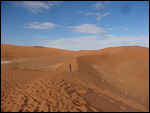
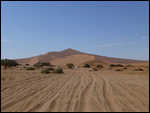
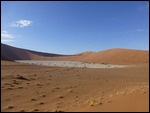
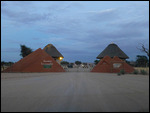

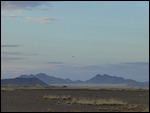
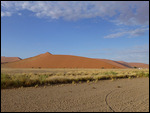

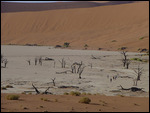
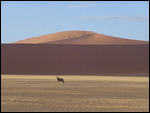


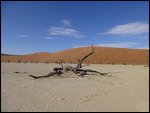
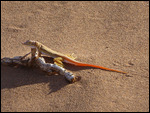
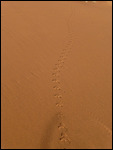


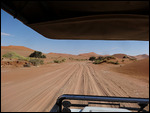
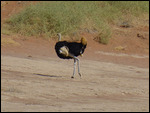
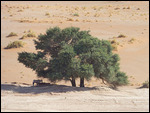

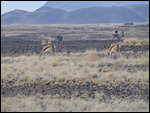

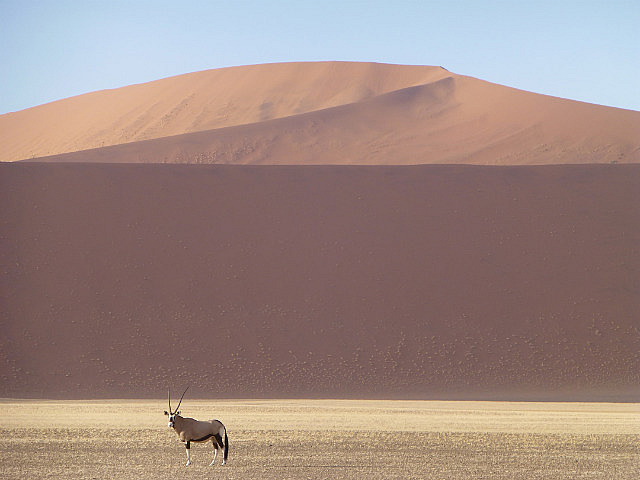




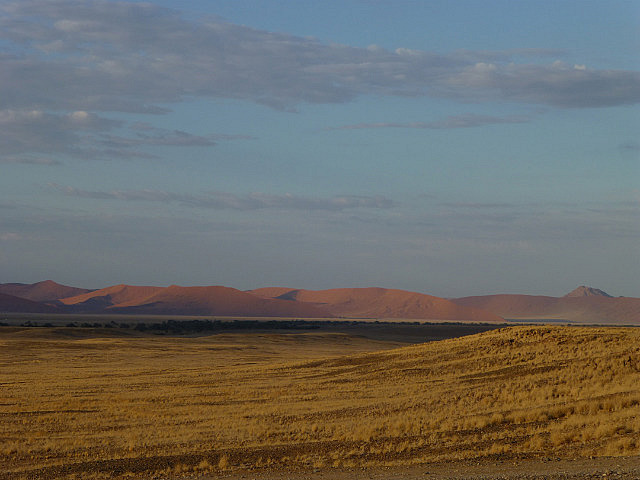


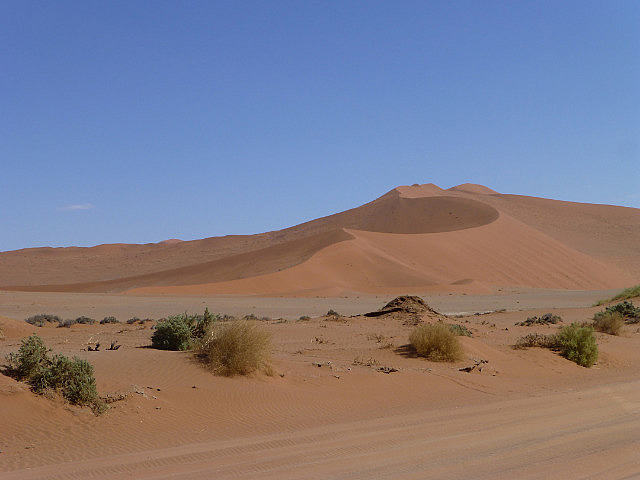

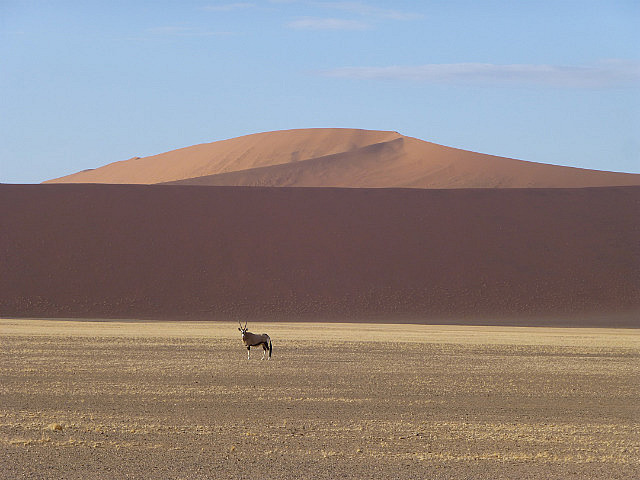
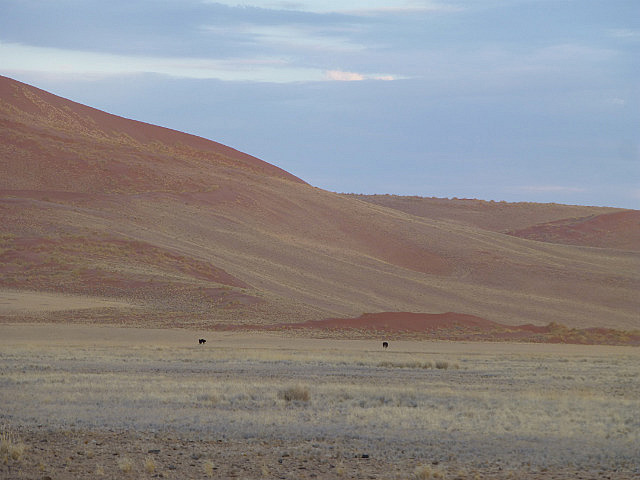
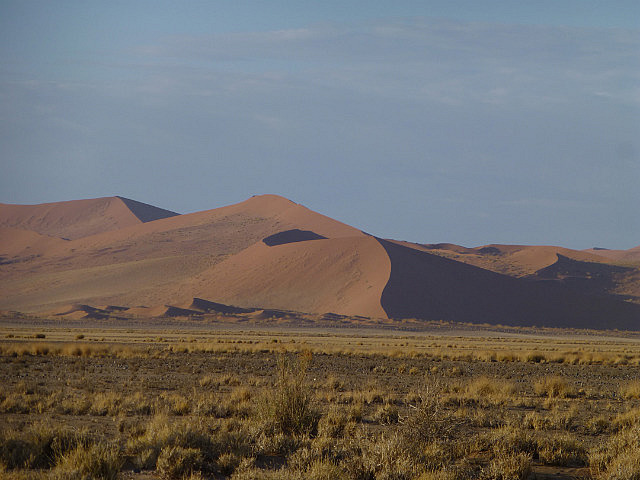
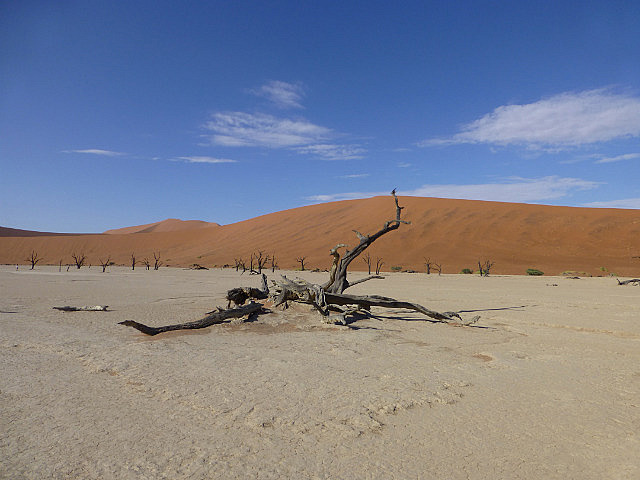

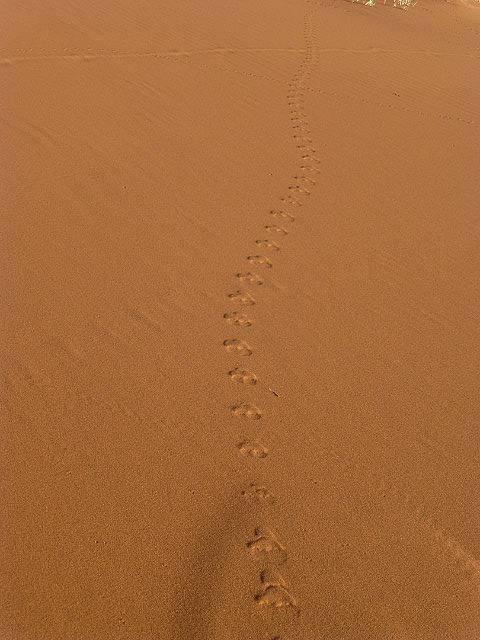
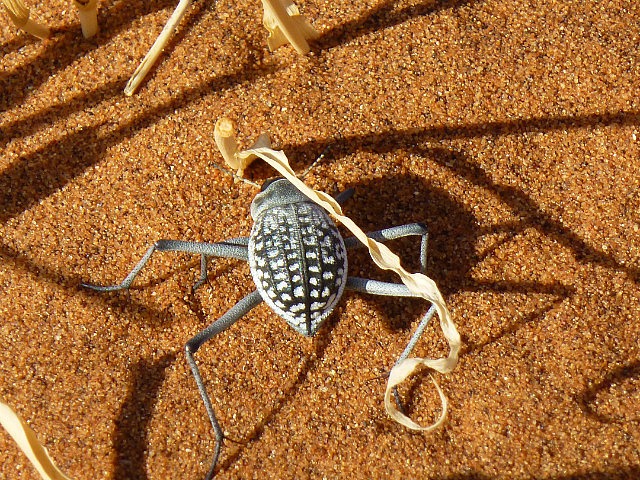

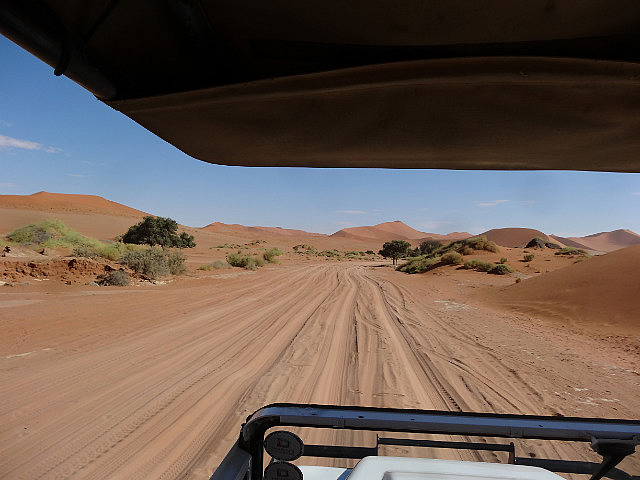

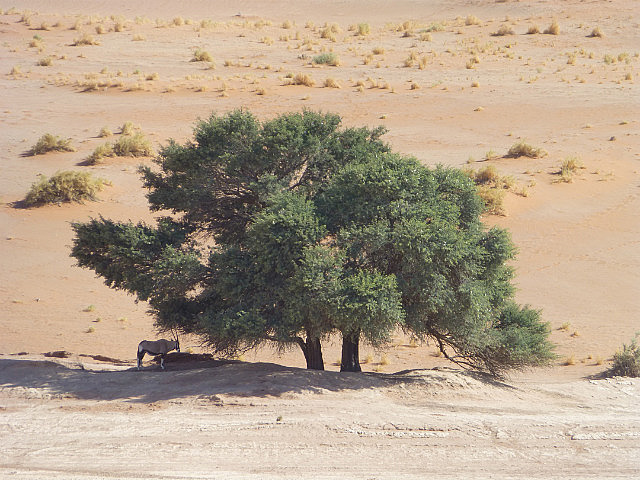
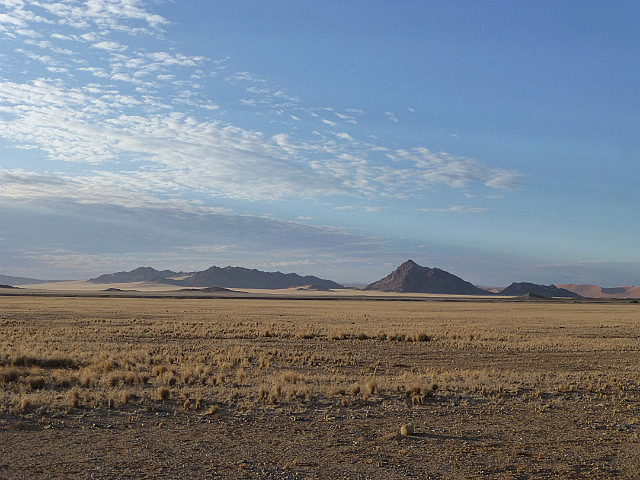

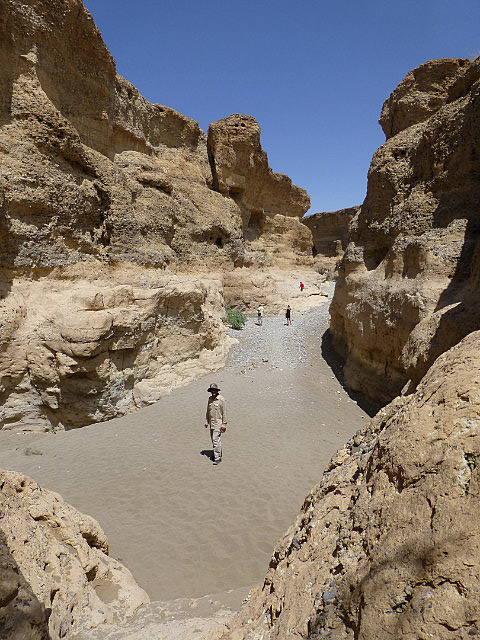
Comments